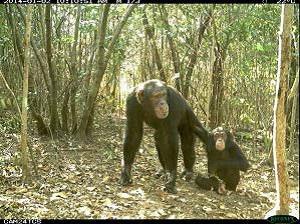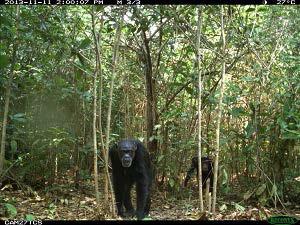Rosa Garriga
Other projects
10 Sep 2015
Follow Up Study to Determine the Demographics of Wild Chimpanzee Population and the Impact Caused to Farmers in an Agricultural Habitat in Sierra Leone
This study aims to assess the status of wild chimpanzees in human-disturbed habitats. We aim also to learn about the biodiversity richness and to collect evidence of the threats to chimpanzees and other wildlife.
We plan to undertake a study of the wild chimpanzee population in non-protected, disturbed and fragmented habitats surrounding human communities in Sierra Leone.

PG
The Sierra Leone National Chimpanzee Census Project (SLNCCP) undertaken by Tacugama Chimpanzee Sanctuary (TCS) between 2009 and 2010 indicated that the wild chimpanzee population of Sierra Leone exceeds 5,500 individuals and that more than half of these are to be found outside protected areas. This situation urges a focus of conservation efforts on non-protected areas harbouring significant numbers of wild chimpanzees and exhibiting higher level of conflicts with their human neighbours. A clear example is Moyamba district in Sierra Leone, in which the national census estimated a population of 600 chimpanzees where hardly any forest is left.

In May 2011, a workshop was held in Freetown aimed at producing a Population and Habitat Viability Assessment (PHVA) for Sierra Leone. The final report highlighted as one of the highest priorities, the need for a better understanding of the status of chimpanzee populations living outside protected areas through camera trapping projects to gather more precise information on population sizes and demographics.
The present study has two main components:
1- Semi-structured interviews to determine: KAP survey (knowledge, attitude and perception) towards chimpanzees and other wildlife; identifying the type of crops raided by different animals; the presence or absence of chimpanzees near the communities.
2- Biodiversity surveys using camera traps
This study aims to assess the status of wild chimpanzees in some of these human-disturbed habitats. We aim also to learn about the biodiversity richness, to characterize and map the vegetation landscape, and to collect evidence of the threats to chimpanzees. All this information is indispensable in order to design a follow up action plan for the long-term protection and conservation of these isolated populations of wild chimpanzees, their habitat and associated biodiversity that exists outside protected areas. In consultation with local communities, alternative and sustainable measures can be identified and ultimately put in place to address issues of hunting, habitat loss and human-chimpanzee conflicts while meeting the specific needs of each local community. This process will also help to elaborate the most appropriate and suitable approach aimed at shaping positively changes in human behaviour concerning the use of wildlife and the forests.